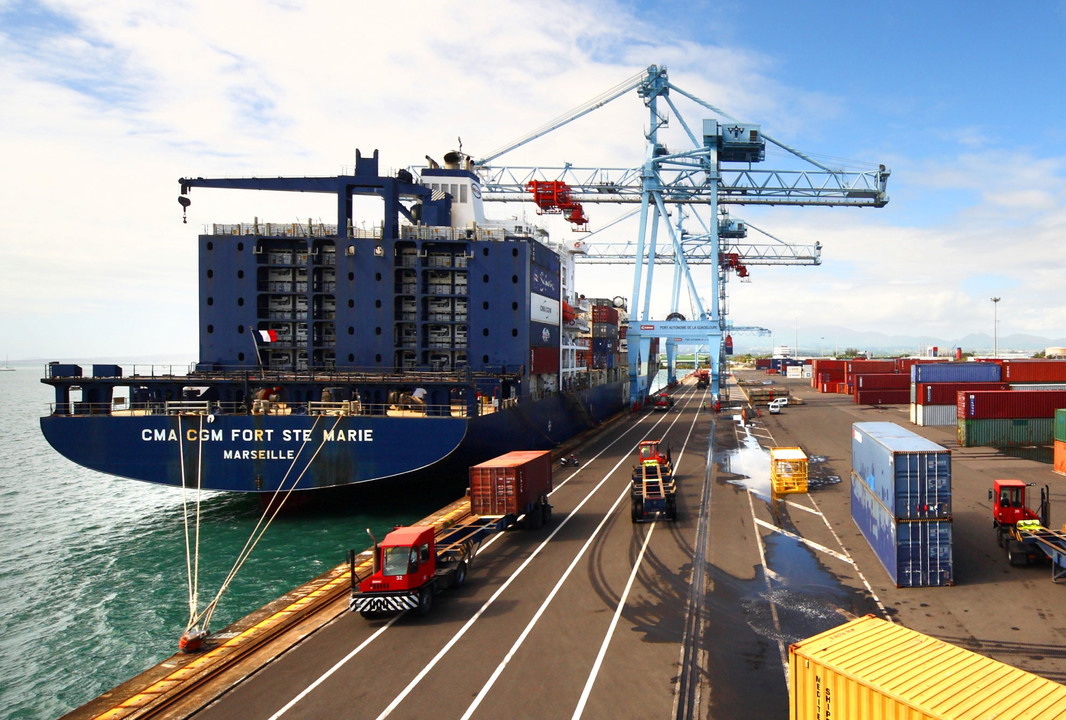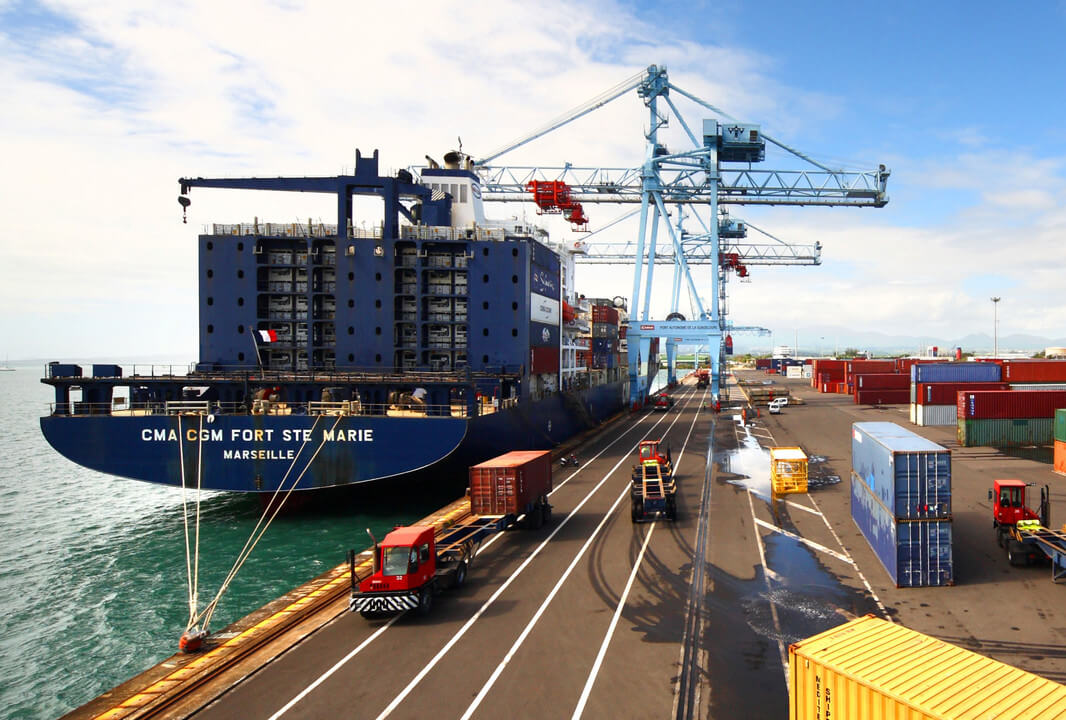A trade lane (or trade route) refers to a specific pathway along which goods are transported between two or more locations, typically across international borders. Trade lanes are established based on the flow of goods and the economic relationships between countries or regions. They encompass both maritime and air routes and play a crucial role in global supply chains by facilitating the movement of goods and fostering international trade.
Transit time refers to the duration it takes for goods or shipments to travel from their origin to their destination. It is a crucial metric in supply chain and logistics management, as it directly impacts delivery schedules, inventory levels, and customer satisfaction. Transit time encompasses the entire journey of a shipment, including transportation, handling, and processing at various checkpoints along the route.
Transloading refers to the process of transferring goods or cargo from one mode of transportation to another, typically from one type of truck or railcar to another, or from rail to truck and vice versa. This logistical practice is often employed to optimize transportation routes, reduce costs, and improve overall efficiency in supply chain operations.
A Transportation Management System (TMS) is a specialized software solution designed to streamline and optimize transportation and logistics operations within supply chains. It provides functionalities to effectively manage and control the movement of goods from origin to destination.
Transportation lead time refers to the duration it takes for goods to be transported from the point of origin to the final destination. It encompasses the time required for transportation activities, including loading, transit, and unloading, across various modes of transport such as road, rail, air, or sea.
A transshipment is the process of transferring goods from one transportation vehicle or vessel to another during their journey from origin to destination. It typically occurs at intermediary points along the supply chain route, where cargo is transferred between different modes of transportation, carriers or vessels.
Twenty-foot Equivalent Unit (TEU) is a standard unit of measurement used in the shipping industry to quantify the cargo-carrying capacity of container vessels. It represents the volume of a standard twenty-foot-long shipping container.
An Ultra Large Container Vessel (ULCV) is a massive container ship used on major trade routes, capable of carrying over 14,000 TEUs.
Vendor Managed Inventory (VMI) is a supply chain management strategy where the supplier or vendor takes responsibility for managing the inventory levels of their products at the customer's or retailer's location. In this arrangement, the vendor monitors the inventory levels based on agreed-upon criteria such as sales data or inventory levels, and initiates replenishment as needed.
Verified Gross Mass (VGM) is a term used in the shipping industry to refer to the total weight of a packed container, including its contents and packaging materials. It is a crucial requirement mandated by the International Maritime Organization (IMO) under the Safety of Life at Sea (SOLAS) convention to enhance safety in maritime transportation.
A floating structure with its own mode of propulsion designed for the transport of cargo and/or passengers. In the Industry Blueprint 1.0 "Vessel" is used synonymously with "Container vessel", hence a vessel with the primary function of transporting containers.
A vessel sharing agreement (VSA) is a cooperative arrangement between shipping companies that allows them to share space and resources on vessels for specific routes.
Vessel bunching refers to the situation where multiple vessels arrive at a port simultaneously or within a short period, leading to congestion and delays. This clustering of vessels can overwhelm port facilities, causing extended wait times for berthing, loading, and unloading operations.
A vessel call sign is a unique identifier assigned to a ship for radio communication purposes. It is used to distinguish the vessel from others in maritime communication systems, including VHF radios and satellite communications.
A vessel omission (sometimes called a port omission) occurs when a scheduled vessel does not call at a planned port during its voyage. This disruption means that the vessel skips the port entirely, which can impact the transportation and delivery schedules of goods.
In cargo shipping, vessel rotation is the planned sequence of port calls that a shipping vessel follows on its route to optimize cargo loading and unloading operations.
The timetable of departure and arrival times for each port call on the rotation of the vessel in question.
A journey by sea from one port or country to another one or, in case of a round trip, to the same port.
Warehouse utilization is a logistics metric that refers to the effective use of available warehouse space for storing goods and inventory.
Order for specific transportation work carried out by a third party provider on behalf of the issuing party.
Logistics yard management refers to the process of overseeing and controlling the movement of trucks, trailers, containers, and other vehicles within a yard or distribution center. This includes tasks such as scheduling, tracking, and coordinating the arrival, departure, and storage of these vehicles.

The Six Busiest Cargo Ports in France
France's ports are vital to its economy and serve as major gateways for trade between Europe, Africa, and the Americas. Located primarily along the Atlantic and Mediterranean coasts, these ports play a significant role in global shipping.
Below are the largest and most important ports in France:
1. HAROPA - Port of Le Havre (FRLEH)
The Port of Le Havre is France's largest container port and serves as a key logistics hub, connecting France with international markets. Together with the ports of Rouen and Paris, it forms the HAROPA Port. Rouen is the largest grain export port in Europe, with strong trade links to African and Middle Eastern countries.
- Location: Situated in northern France, along the Seine River, the port is approximately 200 km (124 miles) from Paris and has access to the English Channel.
- Annual Container Throughput: 2.6 million TEU in 2023 (Upply)
- Annual Cargo Volume: 85.1 million tonnes in 2022 (Container News)
- Key Commodities: Crude oil, refined petroleum, chemicals, automotive products, machinery.
2. Port of Marseille-Fos (FRMRS)
Marseille-Fos is a major hub for oil and chemical products with a strategic Mediterranean location.
- Location: Located in the southern part of France, the port lies near the city of Marseille on the Mediterranean Sea, serving as a gateway to Southern Europe and North Africa.
- Annual Container Throughput: 1.3 million TEU in 2023 (Upply)
- Annual Cargo Volume: 79 million tonnes in 2023 (Marseille Fos Port)
- Key Commodities: Crude oil, chemicals, agricultural products, vehicles.
3. Port of Dunkirk (FRIRK)
Dunkirk is one of France’s leading ports for bulk cargo, especially energy products like coal and liquefied natural gas (LNG).
- Location: Located in northern France, near the Belgian border, Dunkirk faces the North Sea and serves as an important industrial port for the region.
- Annual Container Throughput: 667,051 TEU in 2023 (Upply)
- Annual Cargo Volume: 49 million tonnes in 2022 (Rail Freight)
- Key Commodities: Coal, iron ore, fresh produce, grain.
4. Port of Nantes-Saint-Nazaire (FRNTE)
This port is crucial for energy imports and supports France’s aerospace and shipbuilding industries.
- Location: Located on the Loire River estuary in western France, Nantes-Saint-Nazaire is approximately 50 km (31 miles) from the Atlantic Ocean, serving the cities of Nantes and Saint-Nazaire.
- Annual Container Throughput: 135,600 TEU in 2022 (Nantes Saint-Nazaire Port)
- Annual Cargo Volume: 29.7 million tonnes in 2022, of which 9.9 million tonnes were liquified natural gas (Nantes Saint-Nazaire Port)
- Key Commodities: Petroleum products, natural gas, chemical products, agricultural goods.
5. Port of Bordeaux (FRBOD)
Bordeaux is famous for exporting wine and agricultural products while also playing a key role in importing raw materials for industrial use.
- Location: Situated in southwestern France, the port is located on the Garonne River, approximately 100 km (62 miles) from the Atlantic Ocean.
- Annual Cargo Volume: Approximately 8.5 million tonnes, about half of which is hydrocarbon products (Bordeaux Port)
- Key Commodities: Wine, cereals, chemicals, steel products.
6. Port of Calais (FRCQF)
Calais is one of the busiest passenger ports in Europe and also plays a significant role in freight transport, especially for trade with the UK.
- Location: Situated in northern France, directly across the English Channel from Dover, Calais is strategically positioned for cross-channel ferry services.
- Annual Container Throughput: Primarily focuses on RoRo (Roll-on/Roll-off) traffic.
- Annual Cargo Volume: Nearly 38 million tonnes in 2022 (Customs Support)
- Key Commodities: Vehicles, seafood






